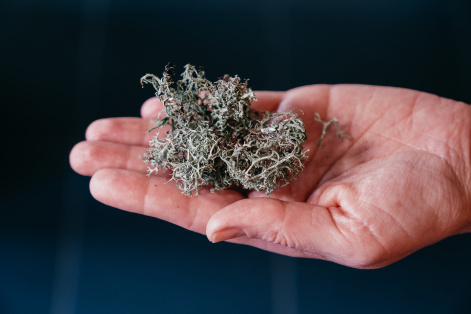Lichens will emit more greenhouse gases due to climate change
29 February 2024 г.

Climate change is especially noticeable in Siberia, where warming rates are high. One of the reasons for these changes, according to scientists, is an increase in the concentration of greenhouse gases in the atmosphere.
Researchers from the Federal Research Center "Krasnoyarsk Science Center SB RAS" and Siberian Federal University have assessed the possibility of greenhouse gas emissions from epiphytic lichens, that is, those growing on living trees, in the forests of Central Siberia. They have shown for the first time that when humidity increases, lichens are able to release methane over a long period. This suggests that with changes in climate and precipitation patterns, lichens will make a fairly large contribution to the exchange of greenhouse gases in the forest ecosystems of Siberia.
Lichens are widespread and found in a variety of forest ecosystems, including Siberian forests, which are particularly vulnerable to climate change. The specialists studied three species of lichens: Parmelia sulcata Taylor, Hypogymnia physodes (L.) Nyl, and Evernia mesomorpha Nyl., growing in the Gremyachya Mane ecological park in Krasnoyarsk. These types of lichens are most common in Siberia. Scientists have discovered that the ability of lichens to release greenhouse gases changes under the influence of precipitation. As humidity increases, lichens release more greenhouse gases.
“In addition to absorbing greenhouse gases, lichens can release them, for example, carbon dioxide, nitrous oxide and methane. Previous studies showed that methane and carbon dioxide emissions from spore-reproducing plants increase at temperatures above 20°C, and we have confirmed this in epiphytic lichens. Greenhouse gas emission or uptake patterns in lichens may also change due to more frequent extreme rainfall events or droughts. Methane will be released into the atmosphere faster during wetter periods. This shows the importance and need to take lichens into account in models assessing the response of the carbon cycle in natural ecosystems to climate change,” said Oksana Masyagina, Candidate of Biological Sciences, researcher at the V.N. Sukachev Institute of Forest SB RAS.
Lichens include green algae, cyanobacteria, bacteria and fungi. At the same time, green algae, which carry out the process of photosynthesis, are especially sensitive to toxic effects. It has been noted that in lichens, due to a polluted atmosphere, the process of photosynthesis can be suppressed, and during this process carbon dioxide and water are converted into glucose, and oxygen is a by-product of the reaction. As a result, they absorb less carbon dioxide. In addition, lichens have the ability to accumulate pollutants from the air, so in conditions of severe pollution their growth and development may be hampered.
“Researchers currently classify the forests where the lichens were collected as areas with low or moderate levels of pollution. However, nearby, to the southwest, there are thermal power plants and private sector households that have been using coal for heating for decades. Our measurements confirm that lichens located on the southern and western sides of tree trunks are more susceptible to air pollution. As a result, they accumulate more harmful chemicals, likely heavy metals and coal combustion products. The toxic substances accumulated in them suppress physiological activity, in particular photosynthesis,” concluded Oksana Masyagina.
The study was supported by the Russian Science Foundation (grant No. 23-24-00167).
Share:
